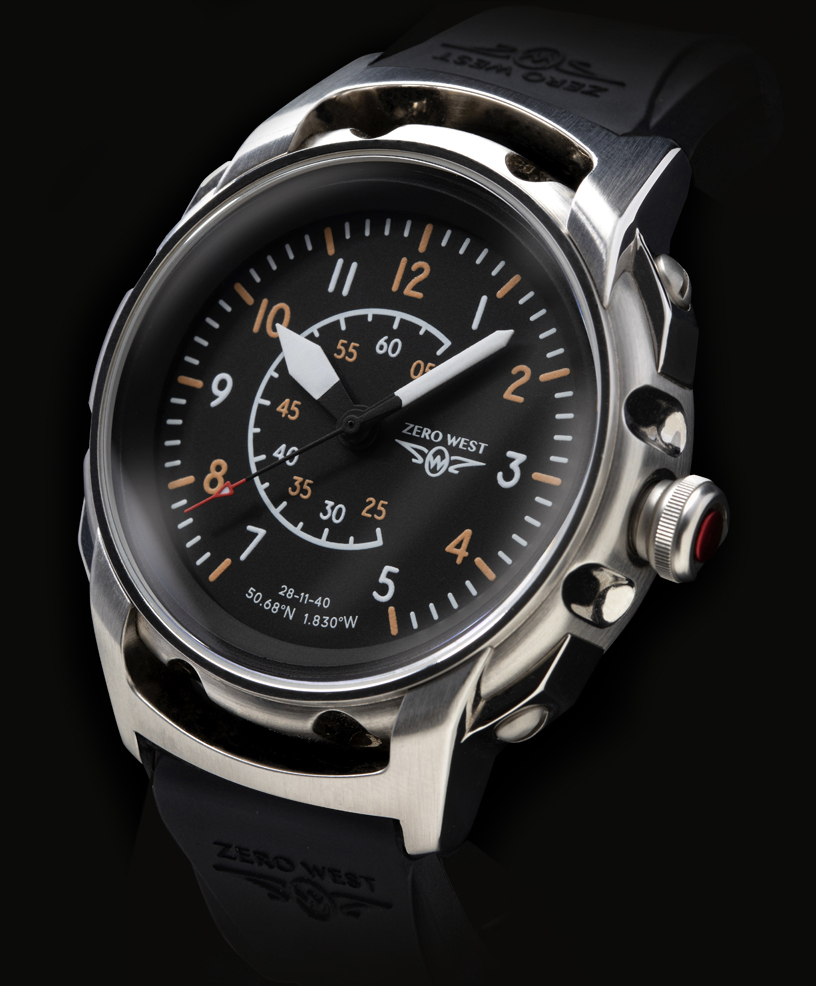Design Attributes
- Latitude and Longitude reference the crash site in Pool Bay
-
Date code references Spitfire P9427 last flight
- Dial design based on a airspeed indicator
- Crown modelled on the joystick gun platform fire button
- Spitfire technical drawing watch back engraving
Case
- 44mm diameter, 316L brushed stainless steel billet, with eight polished vertically cut ball-nose flutes
- Match machined, polished & brushed 316L stainless steel DSL lugs
- Complex watch back engraving of a Mk1 spitfire with P8 compass
Main Crown
- Matt silver finished screw crown, modelled on the joystick gun platform fire button. 316L stainless steel with triple seal technology
Crystals
- Custom double curved domed sapphire glass with blue AR coating on the internal surface
Movement
- ETA 2824
- 28,800vph
- 25 jewels
- Self-winding ball bearing rotor
- Power reserve ~38 hours
- Water resistance: 10ATM (100m) 100% tested
Dial
- Black enamel over brass substrate with over printed vintage dial based on airspeed indicator, numerals and aviation indicators highlighted in SuperLuminova X1 luminous pigment
Hands
- White avionic style hands coated in SuperLuminova X1 luminous pigment. Vintage red tipped sweep hand with inset SuperLuminova X1 luminous pigment triangle
Dimensions
- 44mm diameter
- 14.1mm thick
- 22mm lug width
- 49.6mm lug to lug pin spacing
Strap
-
- 22/20mm Zero West custom Military and aerospace grade cross-linked fluoroelastomer rubber. 1 fixed and 1 sliding keeper
-
Reverse sculptured relief
-
Matt finish
-
Black PVD stainless steel buckle with engraved ZW logo
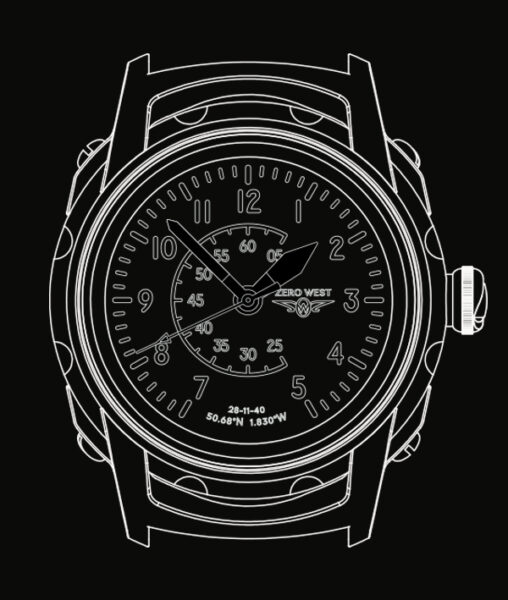
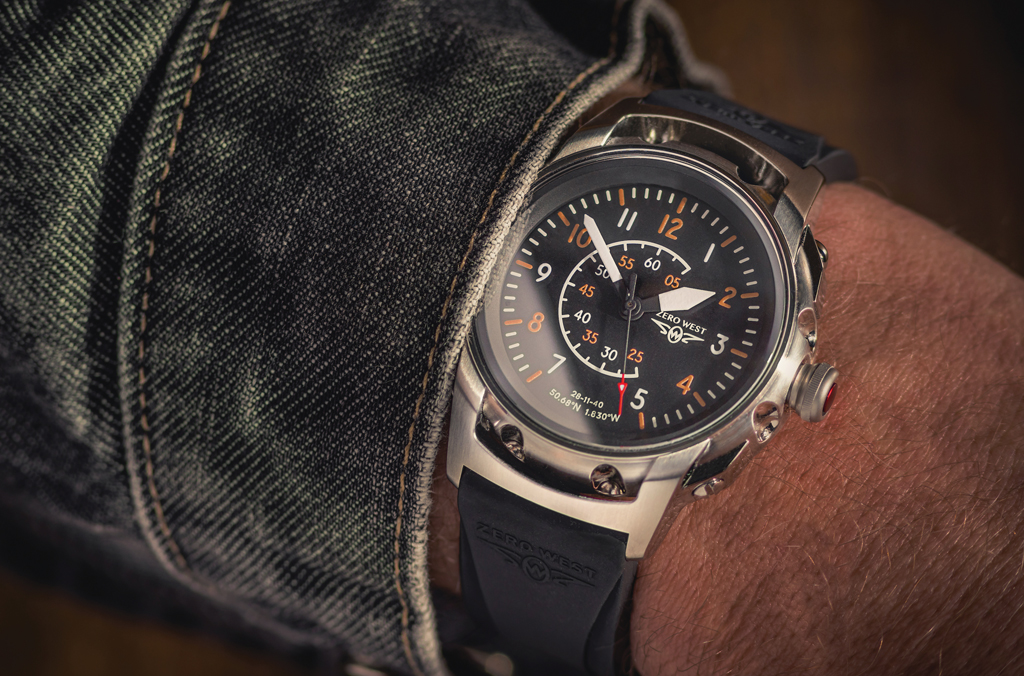
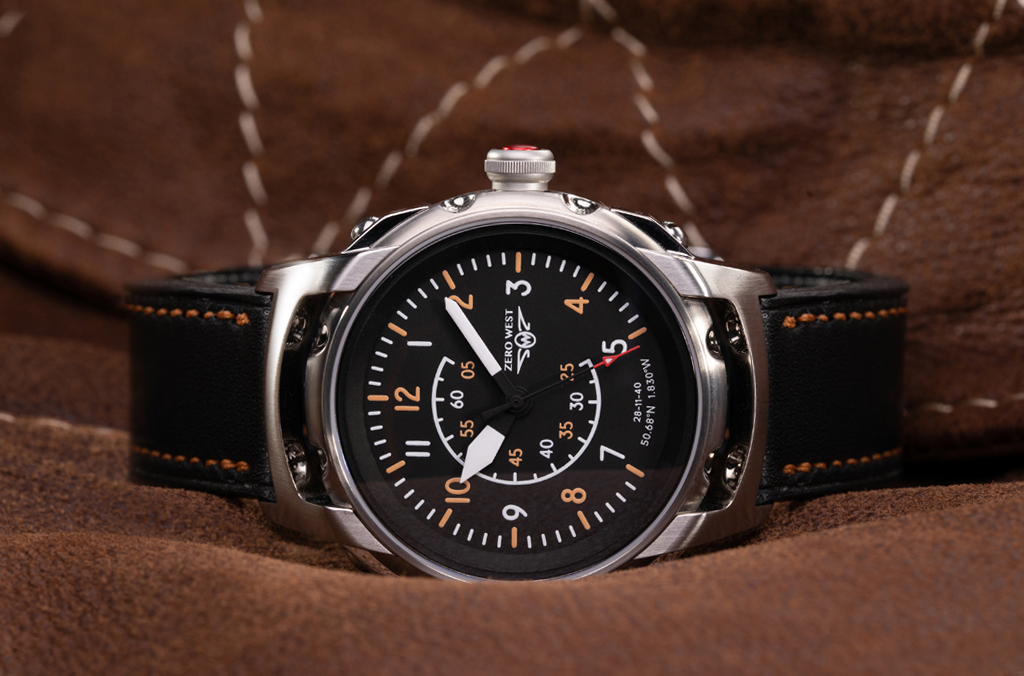
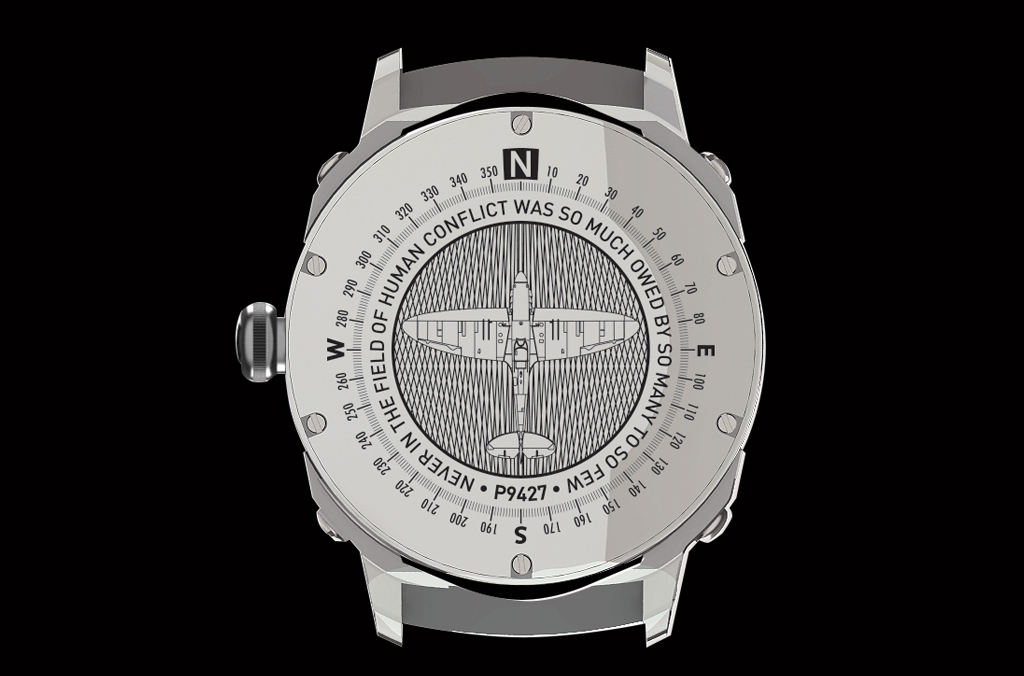
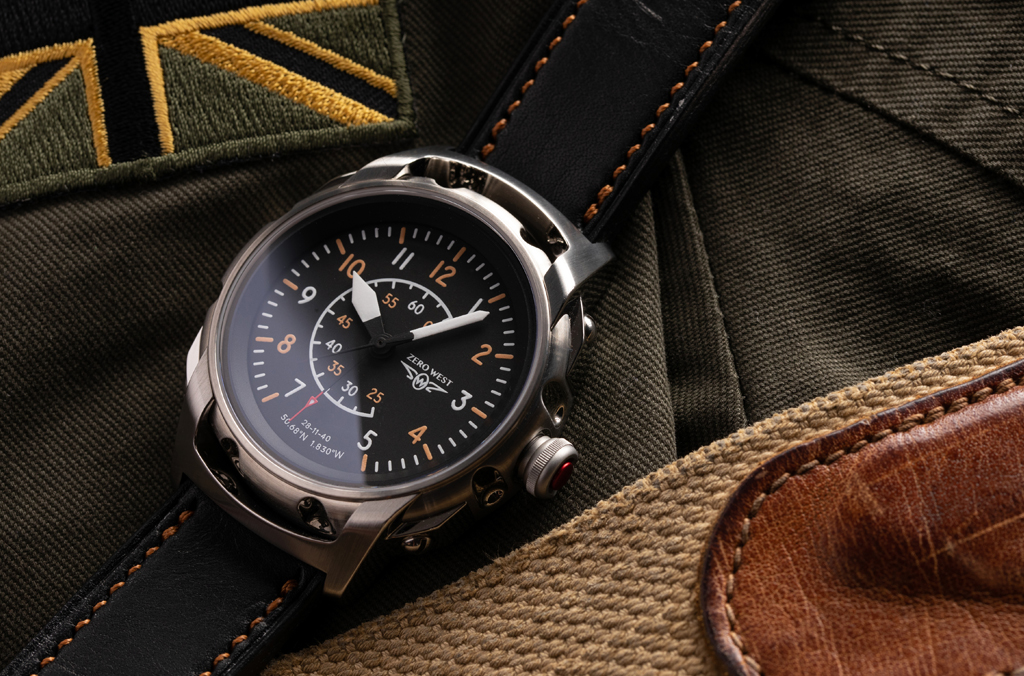
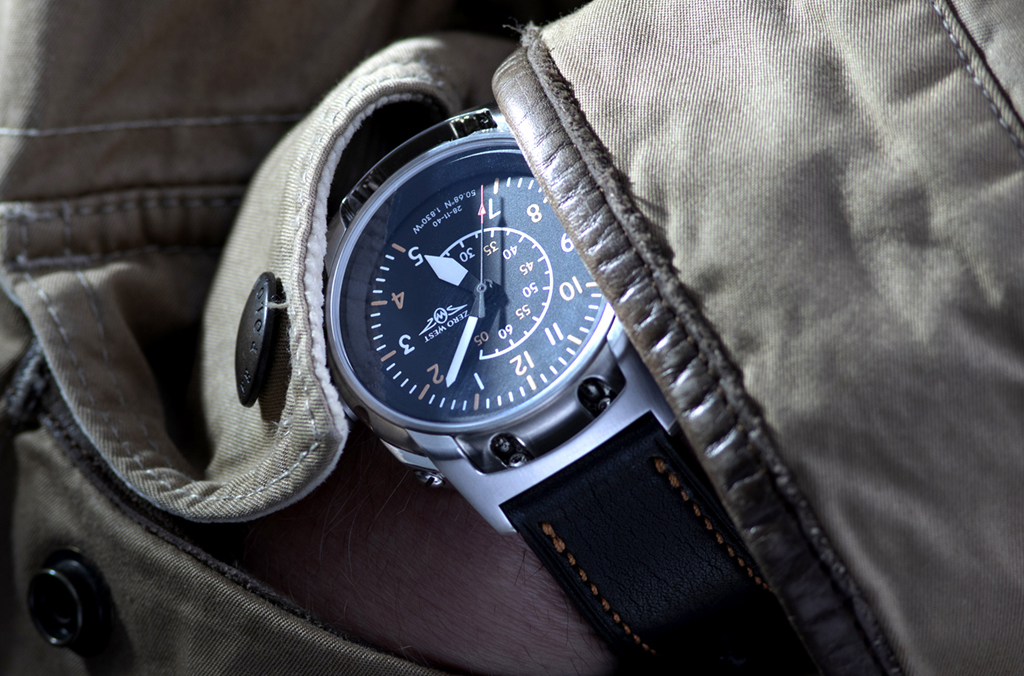

THE STORY BEHIND THE WATCH
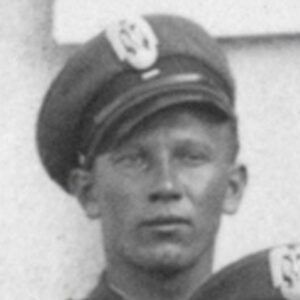
At the tender age of 22, Polish Sergeant Pilot, ‘Ziggy’ Klein fought with skill and courage in the Battle of Britain, initially for 234 Squadron based out of Middle Wallop before transferring to 152 Squadron flying out of RAF Warmwell in Dorset.
He learned to fly at the age of 19 whilst serving in the 4th Air Training Squadron and the Pilot School in Grudziadz, Poland. It was clear he was a skilled pilot and as the war rapidly progressed and Poland was aggressively occupied, his squadron made its way to France where they became attached to the Royal Air Force. Having reached Britain’s shores by February 1940, Ziggy received further combat training before being assigned to 234 Squadron on 6th August 1940, and thrown in to what would be forever marked in history as, ‘The Battle of Britain’.
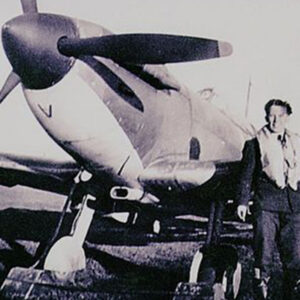
Spitfire P9427 was built at the Supermarine Aviation Works in Eastleigh, Southampton and was first flown on the 19th March 1940. The Mk1a Spitfire had a Merlin III engine powering it to a magnificent maximum speed of 367 mph, and combat range of 248 miles on internal fuel. Armed with eight 0.303 Browning machine guns firing 350 rounds each, this formidable engineering masterpiece was designed for attack and ultimate manoeuvrability in the air. It was designed to be a master of the skies and combat the Luftwaffe.
P9427 saw initial action in the historic 609 Squadron, before joining the ‘Battle of Britain’ with the 74 and 41 Squadrons. By 2nd October 1940, P9427 found a home at 152 Squadron; a few days later, man was joined with machine when Sergeant Pilot ‘Ziggy’ Klein transferred to RAF Warmwell.
On the afternoon of Thursday 28th November 1940 152 Squadron was called to action with 609 Squadron, and intercepted twenty Messerschmitt Bf 109s flying between the Isle of Wight and Poole Bay at 22 000ft. On contact the Squadron immediately broke formation and dogfights quickly exploded into being as fighter planes combined fire power with manoeuvrability to gain air superiority. Attacking in pairs, Klein quickly descended into a dive above The Needles following a lone Messerschmitt at top speed.
The chase was on and with sights set on defending Britain, Klein teamed up with Flight Lieutenant John Dundas of 609 Squadron as their Browning machine gun bullets ripped into the enemy fuselage, the plane plummeting into the sea. It was only later, through the German Press that RAF Fighter Command realised that the Messerschmitt was piloted by legendary Luftwaffe fighter ace, Major Helmut Wick.
Sadly, the elation of this success was short-lived for Klein. Taken down by a spray of bullets in this maelstrom in the air, Spitfire P9427 spiralled out of control to plunge into the depths of Poole Bay.
What we do know is that Sergeant ‘Ziggy’ Klein, like many other young pilots of The Battle of Britain, gave the best of themselves for our freedom.
Sgt Pilot Zygmunt ‘Ziggy’ Klein: 28 Combat Sorties. 65 Operational Flights
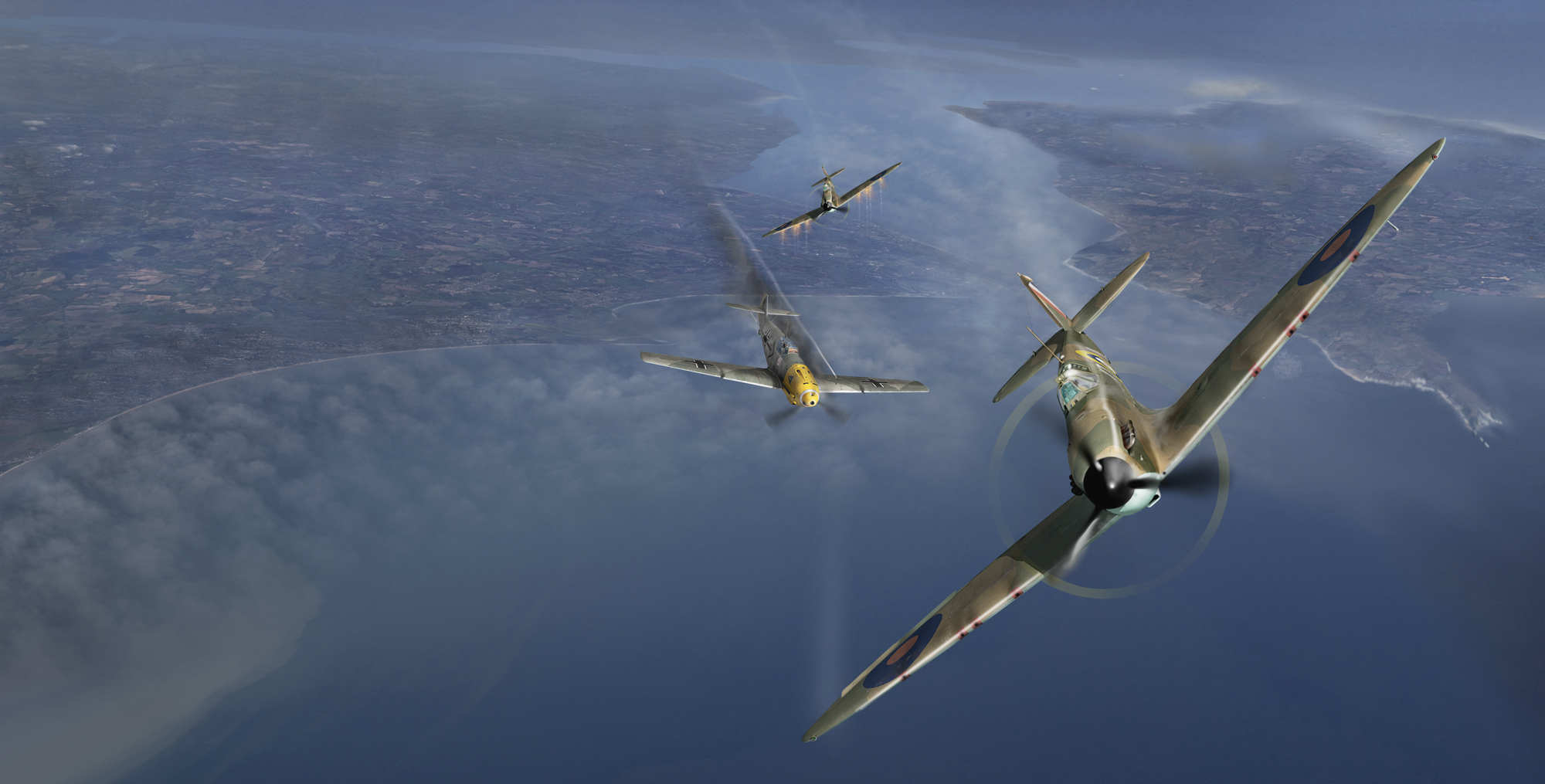
TIME: 28/11/1940 – PLACE: 50.68°N – 1.830°W


